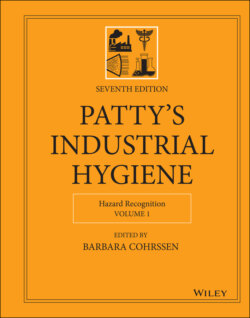Читать книгу Patty's Industrial Hygiene, Hazard Recognition - Группа авторов - Страница 35
4.4 Integration of Total Worker Exposure and Health Concepts into Industrial Hygiene Practice
ОглавлениеAn important new development in the practice of industrial hygiene is the increased understanding of the ability and need to address the well‐being and health of workers within their homes, communities, and environment. This means understanding an individual worker's exposures in the workplace within the context of other exposures that they may experience in their communities or in the course of hobbies or other household exposures. This concept has been developed and assessed by NIOSH and is known as TWH. According to NIOSH, “TWH is a holistic approach to worker well‐being. It acknowledges risk factors related to work that contribute to health problems previously considered unrelated to work. The TWH approach seeks to improve well‐being in the American workforce for the benefit of workers, employers, and the nation by protecting safety and enhancing health and productivity” (https://www.cdc.gov/niosh/twh). TWH has important implications for the practice of industrial hygiene, particularly in the areas of exposure and risk assessment. As a practical matter for industrial hygienists, one part of the TWH conceptual model that is most relevant to IH practice is the exposures that occur in the various environments through which workers move throughout their daily routine, including home, work, nonoccupational activities, and the community. AIHA has characterized this aspect of TWH as Total Worker Exposure and has identified this area as a content development priority for the association (https://synergist.aiha.org/201601-beyond-exposure).
Very similar to the Total Worker Exposure topic is the notion of the Exposome, a term which has been increasingly used and studied in recent years, and which is defined by NIOSH as “the measure of all the exposures of an individual in a lifetime and how those exposures relate to health. An individual's exposure begins before birth and includes insults from environmental and occupational sources” (https://www.cdc.gov/niosh/topics/exposome/default.html). NIOSH has noted that the “exposome provides an opportunity to understand occupational diseases and how to prevent them” (https://www.cdc.gov/niosh/topics/exposome/default.html). Further, NIOSH notes the importance of contributions to research in occupational epidemiology, sampling techniques with increased sensitivity, the evaluation of biomarkers, and the development and improvement of exposure‐related data sources and databases as important tools to better understand the Exposome and Total Worker Exposure over time (https://www.cdc.gov/niosh/twh).
